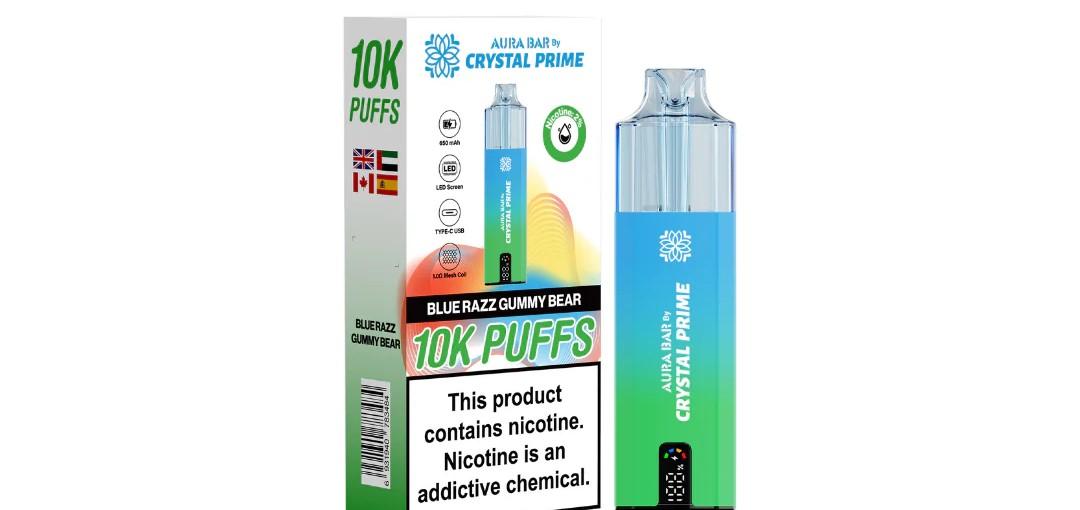Digitizing for Embroidery On Synthetic Fabrics

Synthetic fabrics like polyester, nylon, and spandex bring vibrant versatility to fashion, sportswear, and décor, but their unique properties demand specialized embroidery techniques. This guide explores how to digitize for embroidery on synthetic fabrics, offering creative strategies, technical tips, and practical steps to achieve stunning results. With vivid examples and a concise FAQ, this blog empowers designers, brands, and hobbyists to conquer synthetic fabrics in 2025.
Why Digitizing for Synthetic Fabrics is Unique
Synthetic fabrics, such as polyester blends or nylon, are prized for their durability, stretch, and vibrant finishes but pose challenges like slick surfaces and elasticity. Proper digitizing ensures stitches adhere securely, designs remain clear, and fabrics stay intact. Services like ZDigitizing use AI and expertise to tailor files for synthetic materials, optimizing stitch density, underlay, and pull compensation for flawless embroidery on sportswear, bags, or décor.
Key Considerations for Digitizing on Synthetic Fabrics
Adjusting for Stretch and Elasticity
-
Pull Compensation: Increase compensation (0.2-0.4 mm) to account for fabric stretch, ensuring designs maintain shape on spandex or polyester blends.
-
Lower Stitch Density: Use lighter density (0.4-0.6 mm) to reduce tension and prevent puckering on elastic fabrics.
-
Underlay Optimization: Apply double zigzag or edge-run underlay to anchor stitches on stretchy surfaces.
Impact: Prevents distortion, ensuring designs stay crisp on stretchy synthetics.
Example: A logo on spandex leggings uses pull compensation to maintain shape during movement.
Choosing the Right Stitch Types
-
Satin Stitches: Ideal for outlines or small text (0.1-0.25 inches), providing clean edges on slick fabrics like nylon.
-
Fill Stitches: Use light fill patterns for large areas to avoid excessive tension on polyester.
-
Avoid Overly Dense Stitches: Dense patterns can cause synthetic fabrics to pucker or tear.
Impact: Balances aesthetics and fabric integrity for professional results.
Example: A satin-stitched monogram on a polyester bag ensures clarity without straining the fabric.
Selecting Stabilizers for Synthetics
-
Cut-Away Stabilizers: Essential for stretchy fabrics like spandex to provide lasting support and prevent distortion.
-
Tear-Away Stabilizers: Suitable for stable synthetics like polyester twill for easier removal.
-
Water-Soluble Toppers: Use on textured synthetics like nylon to ensure smooth stitch surfaces.
Impact: Stabilizers secure stitches, enhancing durability and appearance.
Example: A cut-away stabilizer under a nylon jacket logo prevents stretching during embroidery.
Ensuring Color Vibrancy
-
Thread Selection: Use high-quality polyester threads for durability and color retention on synthetic fabrics.
-
Pantone Matching: Specify Pantone codes or thread charts (e.g., Isacord) to match vibrant synthetic fabric hues.
-
Format Support: Choose formats like PES that embed color data for accurate thread selection.
Impact: Enhances visual appeal, aligning embroidery with fabric aesthetics.
Example: A bright logo on a polyester jersey uses Pantone-matched threads for a cohesive look.
Optimizing for Machine Compatibility
-
Correct File Formats: Match files to your machine (e.g., PES for Brother, DST for Tajima) to avoid errors.
-
Machine-Specific Settings: Provide model details (e.g., Brother PE800) for tailored stitch paths and tension.
-
Test Runs: Test files on scrap synthetic fabric to confirm machine performance.
Impact: Ensures smooth, error-free stitching on synthetic materials.
Example: A DST file for a Tajima machine ensures a logo stitches perfectly on a nylon backpack.
Preventing Puckering and Distortion
-
Hoop Tightly: Use proper hooping to minimize fabric movement during stitching.
-
Lower Machine Speed: Reduce speed (e.g., 600-800 SPM) for slick synthetics like nylon to prevent thread breaks.
-
AI-Driven Optimization: Professional services adjust stitch angles and paths to reduce fabric stress.
Impact: Produces smooth, professional embroidery without fabric damage.
Example: A floral design on polyester satin uses lower stitch density to avoid puckering on a dress.
Step-by-Step Guide to Digitizing for Synthetic Fabrics
-
Select a Specialized Provider (5 minutes):
-
Choose a embroidery digitizing service like ZDigitizing with expertise in synthetic fabrics, supporting formats like DST, PES, or VP3.
-
Confirm digital previews, unlimited revisions, and 24/7 support.
-
-
Prepare Artwork for Synthetics (5-10 minutes):
-
Submit 300 DPI JPG, PNG, or AI files with bold designs (3-5 colors, elements at least 0.1 inches wide).
-
Simplify intricate patterns using Canva or Adobe Illustrator to suit stretchy fabrics.
-
Specify thread colors with Pantone codes or charts.
-
-
Submit Detailed Specifications (5-10 minutes):
-
Upload artwork via a secure portal with SSL/TLS encryption.
-
Specify:
-
Design Size: E.g., 2-3 inches for sportswear, 4-6 inches for bags.
-
Placement: E.g., sleeve, chest, or backpack panel.
-
Fabric: E.g., polyester, nylon, or spandex.
-
File Format: Check your machine’s manual (e.g., PES for Brother, DST for Tajima).
-
Techniques: E.g., satin stitches, light fill, or 3D puff.
-
Machine Model: E.g., Brother PE800, Tajima TMBP.
-
-
Note project goals (e.g., sportswear branding) for tailored files.
-
-
Review Digital Previews (5-10 minutes):
-
Check stitch patterns, density, and alignment for synthetic fabric compatibility.
-
Request revisions for issues like puckering risks or color mismatches.
-
-
Test and Produce (10-20 minutes):
-
Download files in 2-12 hours via a secure link.
-
Test on scrap synthetic fabric (e.g., polyester twill) with cut-away or tear-away stabilizers.
-
Inspect for puckering, thread breaks, or distortion, contacting support for quick fixes.
-
Produce final items with high-quality polyester threads, starting with a small batch.
-
Total Time: ~20-50 minutes, with professionals handling technical digitizing.
Creative Tip: Combine satin stitches with light fill patterns to create dynamic, textured designs on synthetic sportswear, enhancing both style and functionality.
Applications of Digitizing for Synthetic Fabrics
-
Sportswear: Logos or team names on polyester jerseys or spandex leggings for durability and stretch.
-
Fashion: Patterns on nylon dresses or polyester jackets for vibrant runway looks.
-
Bags and Accessories: Embroidered logos on nylon backpacks or polyester tote bags for branding.
-
Outdoor Gear: Designs on weather-resistant synthetics for tents or jackets.
-
Event Décor: Monograms on polyester table runners for vibrant, durable event aesthetics.
Overcoming Challenges on Synthetic Fabrics
-
Puckering: Stretchy or slick fabrics distort under dense stitches.
-
Solution: Use lower density, pull compensation, and stabilizers.
-
-
Thread Breaks: Slick synthetics cause needle friction.
-
Solution: Reduce machine speed and use polyester threads.
-
-
Detail Loss: Small designs blur on stretchy fabrics.
-
Solution: Simplify artwork and use satin stitches for clarity.
-
-
Machine Errors: Incompatible files disrupt stitching.
-
Solution: Specify machine model and format.
-
Future Trends in Digitizing for Synthetics
In 2025, digitizing for synthetic fabrics will advance with:
-
AI Precision: Enhanced algorithms for stretch and slick fabric optimization.
-
AR Previews: Virtual visualization of designs on synthetic materials.
-
Smart Machines: IoT-enabled adjustments for flawless stitching on synthetics.
Conclusion
Digitizing for embroidery on synthetic fabrics ensures vibrant, durable designs tailored to the unique properties of polyester, nylon, or spandex. Services like ZDigitizing deliver optimized files in 2-12 hours for $10-$20, enabling flawless embroidery without software or expertise. By selecting a trusted provider, preparing bold artwork, specifying fabric and machine details, reviewing previews, and testing files, you can master embroidery on synthetics. With AI, AR, and IoT advancements on the horizon, digitizing will continue to elevate synthetic fabric projects in 2025 and beyond.
FAQs: Digitizing for Synthetic Fabrics
Why is digitizing different for synthetic fabrics?
Synthetics require tailored settings for stretch, slickness, and durability to prevent puckering or distortion.
How do I digitize for synthetic fabrics?
Submit clear artwork, specify fabric and machine details, use stabilizers, review previews, and test files.
What projects use synthetic fabric digitizing?
Sportswear, fashion, bags, outdoor gear, and event décor.
How fast are digitizing services for synthetics?
Files are delivered in 2-12 hours, with rush options under 2 hours.
What’s the cost of digitizing for synthetics?
Rates start at $10-$20 per design, with bulk discounts.
What artwork is best for synthetics?
High-resolution (300 DPI) JPG, PNG, or AI files with bold designs (3-5 colors).
What challenges affect synthetic fabric embroidery?
Puckering, thread breaks, or detail loss; solved with optimized settings and testing.
How do professional services help?
Providers like ZDigitizing use AI and expertise to tailor files for synthetic fabrics.
What technologies support synthetic digitizing?
AI, AR, secure cloud platforms, and encryption ensure precision and efficiency.
What’s the future of synthetic fabric digitizing?
AI, AR previews, and IoT will enhance accuracy and creativity for synthetic materials.







